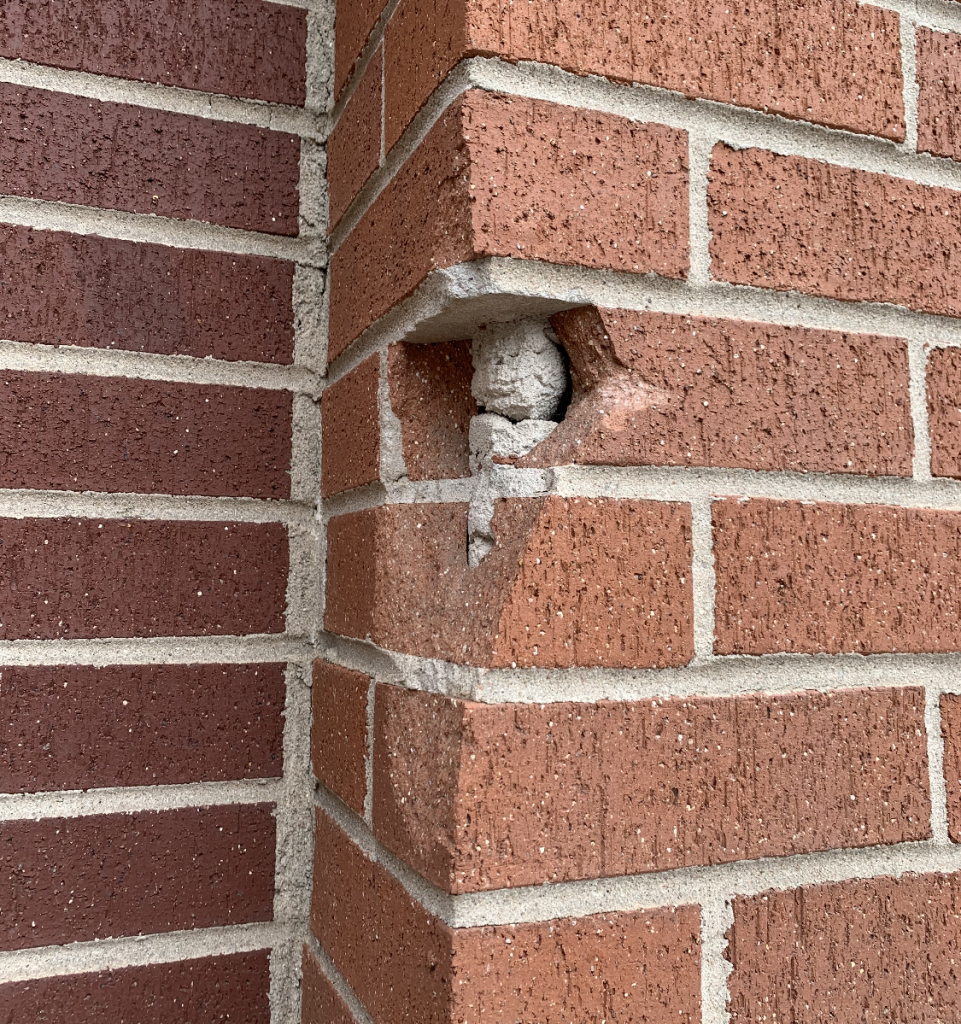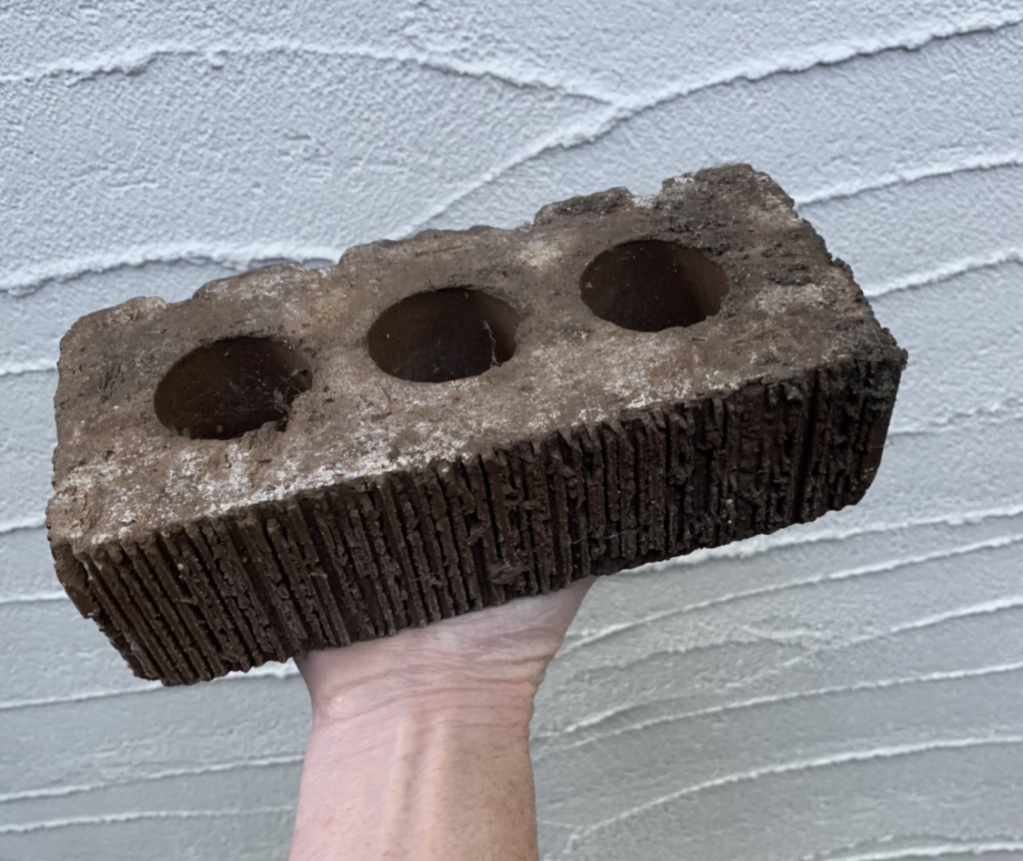When we see parts of buildings coming apart, we get curious, and that can prompt us to learn how things get put together. Sometimes, it’s obvious how building elements began to deteriorate or started to come undone. Other times, it’s a real head-scratcher.

This masonry wall is separated from the street by about 5 feet of sidewalk, and another 4 feet of planting strip with some trees. The closest lane on the street is dedicated to parallel parking. This damage is about 6 feet above the sidewalk. I just can’t imagine how this happened. But what it exposes is the stuff we don’t usually see (a cylinder of mortar!) so here is an opportunity for exploration.
Many people never see the entirety of a single brick. We walk by brick walls, but are never prompted to ask what a lone brick looks like without its fellow bricks.

Or we walk over beautiful brick pavers, which some people have no way of knowing aren’t the same type of brick that is typically used for building walls.

Or we spent the first decade of our life playing with the pallet of brick pavers our parents eventually, finally, paved the family home’s outdoor courtyard with. So some people probably imagine that all bricks are solid all the way through. However, today’s facing brick, the brick that is visible on a building, isn’t typically solid all the way through. A “solid” brick by today’s standards can have up to 25 percent of its cross-sectional area cored out or depressed.


There are a few good reasons for voids such as cores, frogs (depressions), or cells. Compared to bricks that are completely solid, bricks with voids use less clay, can be fired in the kiln more evenly and quickly (using less energy), and are lighter-weight (easier to transport and to install). Voids also allow for mortar on more surface area of the brick, which helps all the bricks in the wall mechanically bond together better. In the case of cores and cells, mortar can continue through each brick from the mortar bed below to the mortar bed above, further strengthening the bonds between the individual components of the wall. (That’s what that cylinder of mortar is in the top photo – mortar continuing through cores in bricks from bed to core to bed to core. It is the stuff we are not meant to see – part of the magic of masonry walls.)
I guess one downside of a well-bonded wall such as the one in the top photo is that it’s harder to get a damaged brick (or 4 damaged bricks) out of the wall for replacement. I wonder exactly when this damage happened – before or after final completion – and why it wasn’t repaired.
When specifiers specify bricks, we indicate that bricks to be used in exposed conditions, such as at ends of window sills and ends of wall caps, are to be bricks without voids such as cores, frogs, and cells. Otherwise, voids in bricks are allowed, but the voids will not be visible in completed construction.
Sometimes damage happens, but at other times… well, someone didn’t think this through before ordering materials (photo of site wall cap, below). It’s not only when things fall apart that their insides are exposed. Some things just aren’t planned, detailed, or specified carefully. This isn’t magic revealed, it’s just a mistake that got built. Let’s try to do better.

I’m just a brick lover, not a brick expert. The Brick Industry Association (BIA) has lots of useful information. Here’s the technical article that addresses some of these issues mentioned above.
Likely freeze thaw within a small fracture that went deep into the brick. Also as the brick below would guess that the mortar was stronger than the brick.
Of course this is unencumbered by the thought process.
Thank you, Robert! I just couldn’t begin to imagine before. I was figuring it had to be some impact. Although I didn’t think about it as a contributing factor, I had been wondering if the mortar was stronger than the brick (when wondering why they didn’t replace the damaged bricks), because of that perfectly intact mortar bed above the void where the largest piece of brick is gone, and now that I look at it with this in mind, the piece of brick left behind the cylinder (and that perfectly round cylinder itself). Thanks for reading and commenting, and maybe solving the mystery. The wall is in Denver, and the corner of that damaged part points southeast, so would definitely have seen some freeze-thaw action if there was water in the assembly.
Thanks Liz for writing about this stuff. Construction is almost totally unregulated, most tradespeople learn their craft via apprenticeship, so there are unlimited opportunities for variations in approach as well as mistakes.
Thanks, Barbara!